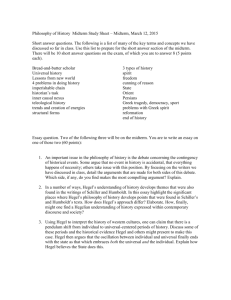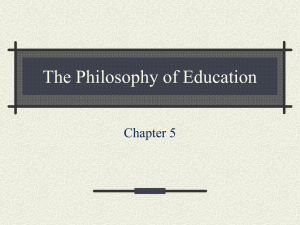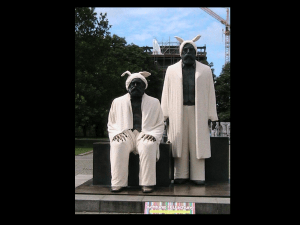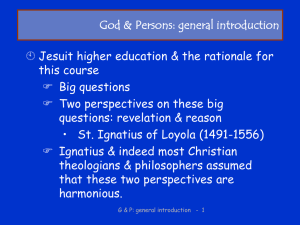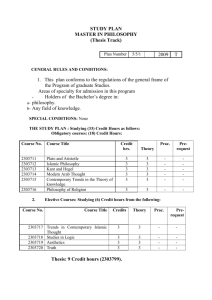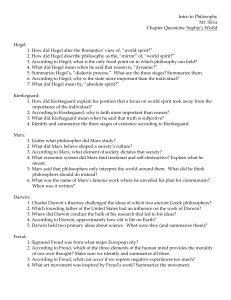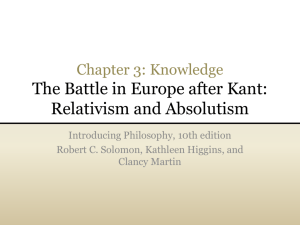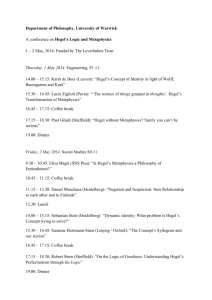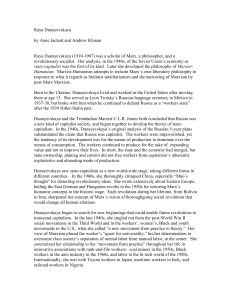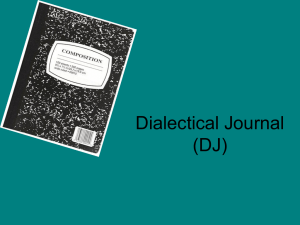Conflict Management
advertisement
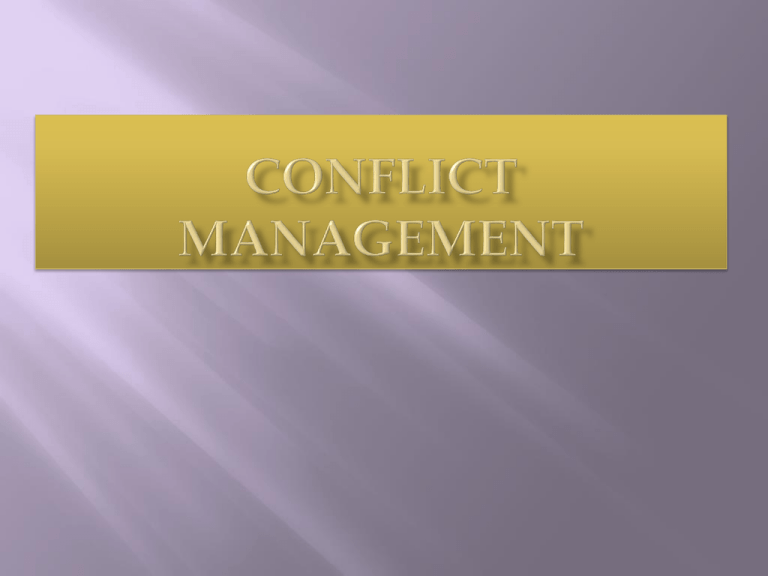
Conflict is inevitable, Conflict is the “Incompatibility or inconsistency of the relationship, objectives of the two or more social entities,” Conflict is the perception of differences of interests among people, Different attitudes, values, beliefs, and skills. Conflict is a process of social interaction involving a struggle over claims to: resources, power and status, beliefs, and other preferences and desires. The aims of the parties in conflict may extend from simply attempting to gain acceptance of a preference, or securing a resource advantage, to the extremes of injuring or eliminating opponents. Recently Scholars in organization theory became interested in studying conflict, Renewed interest and significant changes in the study of conflict in social and organizational contexts, International Association for Conflict Management and Conflict Management Division of the Academy of Management to encourage research, Teaching, and training and development on managing social and organizational conflicts and The publication of the International Journal of Conflict Management. Philosophy and Sociology contributed most to the theory of social conflict, Philosophy: (Plato and Aristotle) tension within society is natural, and therefore some conflict is inevitable. (Plato), Plato emphasised on proper balance of the parts to keep social conflict at minimum, Balance can be obtain through appropriate leadership, Plato and Aristotle stressed that an absence of conflict is a sine-qua-non for the attainment of the just form of life in the city-state. To them, Conflict is a threat to the success of the state and should be kept at an absolute minimum, and removed altogether if possible”, Both suggested government intervention to maintain order in social relations, Hobbes considered “human beings as egotistical, the dupes of error, the slaves of sin, of passion, and of fear, Sovereign, should control human beings, Locke was critical of Hobbes’s nature for the political leader, Although Locke also concluded that government should control conflict, Hegel’s philosophy is dominated by the notion of the dialectic, which has developed four different meanings: (1) arriving at the truth, (2)dialogue or debate, (3) process of ascertaining the unrestricted truth, and (4) process of change through the conflict of opposing forces, Hegel’s dialectic asserts that every finite concept (thesis, or the first doctrine) bears within itself its own opposite (antithesis, or the second doctrine). To overcome the opposition, one must reconcile the opposing concepts by coming to a third position (synthesis, or the third doctrine). The dialectics of Marx and Hegel are different, Marx saw human history as full of conflict between classes—bourgeoisie (business class) and proletariat (working class)—which is the mechanism of change and development. Marx’s dialectic, is associated with class conflict rooted in economic disparities. influenced by Darwin’s theory of evolution and Hegel’s dialectic process, “Conflict is the gadfly to thought. It stirs us to observation and memory. It instigates us to invention. It shocks us out to sheep-like passivity, and sets us at noting and contriving” (p. 300). An individual should examine a conflict situation to discover the various actions possible and choose the one that is most effective. Readapt through a change in their accustomed modes of conduct and belief. Charles Darwin (1809-1882) Biological species survive and grow by confronting environmental challenges. The growth of human beings is a function of their response to conflict with the environment, If conflict were altogether absent—the progress of human beings would be retarded. Georg Simmel (1908/1955) His general hypothesis was that a certain amount of conflict is as essential to the proper functioning of groups, as are stability and order, He believed that in small groups such as the marital couple, “a certain amount of discord, inner divergence and outer controversy, is organically tied up with very elements that ultimately hold the group together, Elton Mayo’s (1933) To him, conflict was an evil and should be minimized or, if possible, eliminated from organizations altogether, Conflict with management was thus a deviation that threatened the effectiveness of organizations Talcott Parsons’s formulated the structuralfunctional theory. the basic assumption of the theory is that society is inherently stable, integrated, and functional, and, as a result, conflict is viewed to be abnormal and dysfunctional. The natural tendency of men to hostility, and the difficulty of controlling them adequately. Coser (1956), The Functions of Social Conflict presented his viewpoint, focused on the productive potential of conflict, A realistic view of conflict is that it has productive, as well as destructive potentials, The functional and dysfunctional outcomes of conflict in organizations are as follows: Functional Outcomes • Conflict may stimulate innovation, creativity, and growth. • Organizational decision making may be improved. • Alternative solutions to a problem may be found. • Conflict may lead to synergistic solutions to common problems. • Individual and group performance may be enhanced. • Individuals and groups may be forced to search for new approaches. • Individuals and groups may be required to articulate and clarify their positions. Dysfunctional Outcomes • Conflict may cause job stress, burnout, and dissatisfaction. • Communication between individuals and groups may be reduced. • A climate of distrust and suspicion can be developed. • Relationships may be damaged. • Job performance may be reduced. • Resistance to change can increase. • Organizational commitment and loyalty may be affected. Conflict is one of the major organizational phenomena. Organization theories “that do not admit conflict provide poor guidance in dealing with problems of organizational efficiency, stability, governance, and Change. to understand the nature of organizational behaviour and organizational processes” organisational conflict important. The classical organization theorists implicitly assumed that conflict was detrimental to organizational efficiency and therefore should be minimized in organizations. They prescribed organization structures—rules and procedures, hierarchy, channel of command so that organization members would be unlikely to engage in conflict. This approach was based on the assumption that harmony, cooperation, and the absence of conflict were appropriate for achieving organizational effectiveness, believed that organization would improve if the principles of scientific management were implemented. Taylor particularly insisted that the conflicts between labour and management would disappear if these principles were applied. Some of these principles involved the following: 1. The development of a true science of work that involves determining a fair day’s work. 2. Scientific selection and progressive development of workers. 3. Fitting of workers to their respective tasks. 4. Constant and intimate cooperation of managers and workers. 5. Provision of means to encourage each person to the utmost utilization of his or her capacity. 6. Development of organization structures to control the various phases of production. Modern organization theory is greatly indebted to Fayol, Fayol advocated that the managerial functions, such as planning, organizing, command, coordination, and control, are applicable to all sorts of organized human enterprise. some of his organization principles, such as unity of command, span of control, division of work, are widely used today. He also like other classicists implicitly assumed that conflict was detrimental to organizational effectiveness. proposed a structure of organization that he called bureaucracy, Bureaucratic organizations must follow several fundamental principles: 1. A well-defined hierarchy of authority. 2. Division of work based on functional specialization. 3. A system of rules covering the rights and duties of employees. 4. A system of procedures for dealing with work situations. 5. Impersonality in interpersonal relationships. 6. Selection of employees and their promotion based on technical competence Weber left no room for conflict or deviance She noted the value of constructive conflict in an organization: “We can often measure our progress by watching the nature of our conflicts. According to her, we become spiritually more and more developed as our conflicts rise to higher levels” She strongly advocated the need for an integrative (problem-solving) method for managing organizational conflict. 1. Litterer (1966) argued that tension is normal, even desirable, with the thought growing that “healthy” personalities actually seek to increase tension. Whyte (1967) stated organization must be capable of recognizing the problems it faces and developing ways of solving these problems. “healthy” organizations seek to increase intraorganisational conflict. Robbins (1974) presented three philosophies of organizational conflict: The classicists, or traditionalists, 1. Based on the assumption that conflict is detrimental to an organization and, as such, must be reduced or eliminated. 2. behaviouralists’ philosophy, “the recognition that conflict is inevitable in organizations. 3. The philosophy of conflict of the interactionists’ It is characterized by the following: A. B. C. D. Recognition of the absolute necessity of conflict; Explicit encouragement of opposition; Defining conflict management to include stimulation as well as resolution methods; and Considering the management of conflict as a major responsibility of all administrators. Organizational conflict is a positive indicator of effective organizational management. Conflict can be functional to the extent to which it results in the, creative solution to problems or the effective attainment of organizational objectives Little or no conflict in organizations may lead to stagnation, poor decisions, and ineffectiveness.

